Before some readers ask the questions, I’ll clarify that many experts define a cavern as just one type of cave. So we will be talking about formations found in both in this article.
I love touring caves and caverns. My youngest son and I have visited most of the caves and caverns along the east coast. I’ve been to more in central and western states. Each one is unique, and I have not had the opportunity to visit the sites of other countries. I’m sure they’re all spectacular.
The formations found in these mostly underground caves are often formed by water over extended periods, as in centuries or millennia. Water-induced formations are called speleothem and may take centuries to develop, so it’s not surprising that great care is taken to preserve these fragile environments.
Common Cave Formations
To begin, I will explain some formations visitors can expect to see when exploring many caves and caverns. Then I will list some of the most well-known caves and caverns around the globe.
Stalactites and Stalagmites
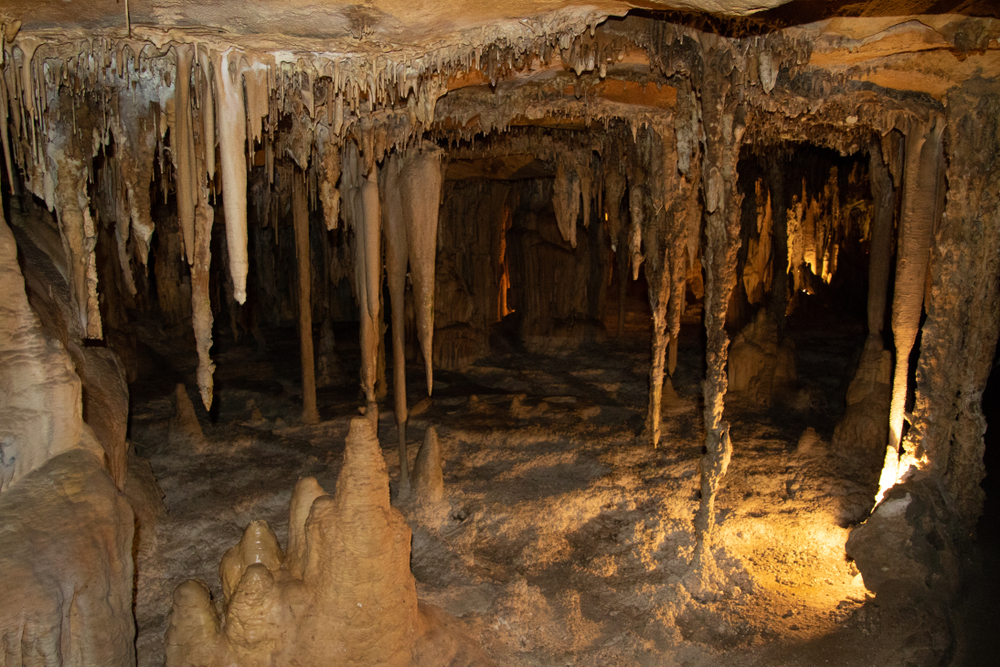
These icicle-shaped deposits are among the most common cave formations. They are speleothems, formed by water as it passes slowly through rock, dissolving limestone and re-depositing calcium carbonate where it drips from the ceiling or splashes on the floor.
Remember, a stalactite is “stuck tight to the ceiling,” while a stalagmite pushes up with all its might. There are a number of more poetic ways of recalling which is which, but if you can remember the first one, you’ll know what’s what with these formations.
Cave Pillars
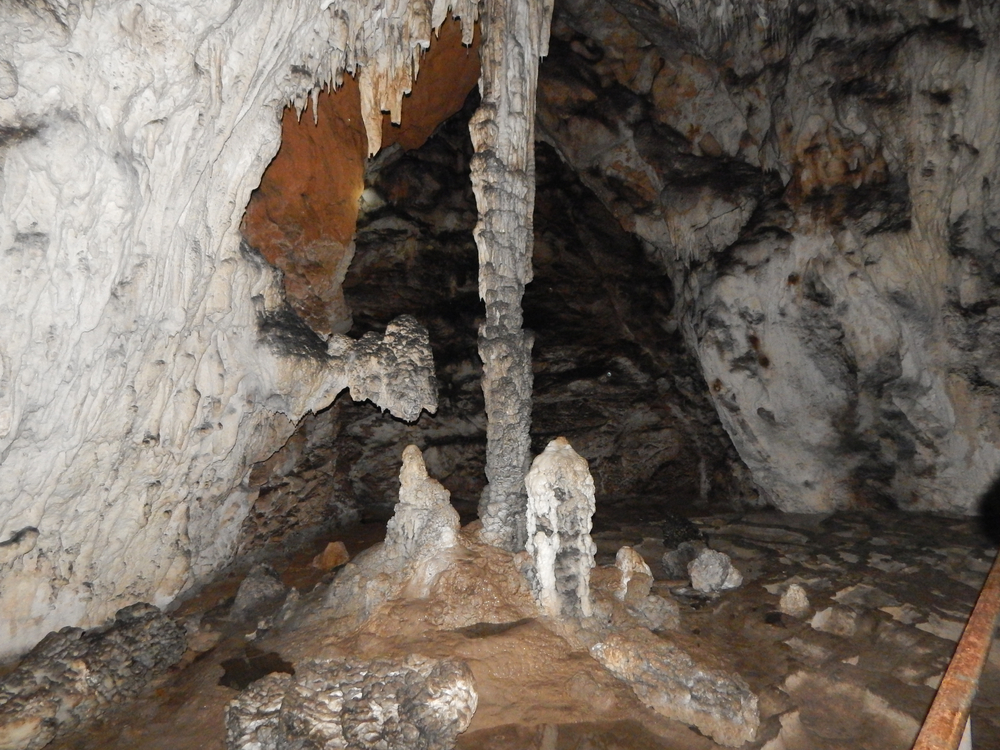
Cave pillars result from a stalactite meeting a stalagmite to form one column from floor to ceiling. Once the two structures meet, the cave pillar continues to develop as long as water feeds it. So cave pillars can become huge, with fantastical shapes and outcroppings.
Flowstone
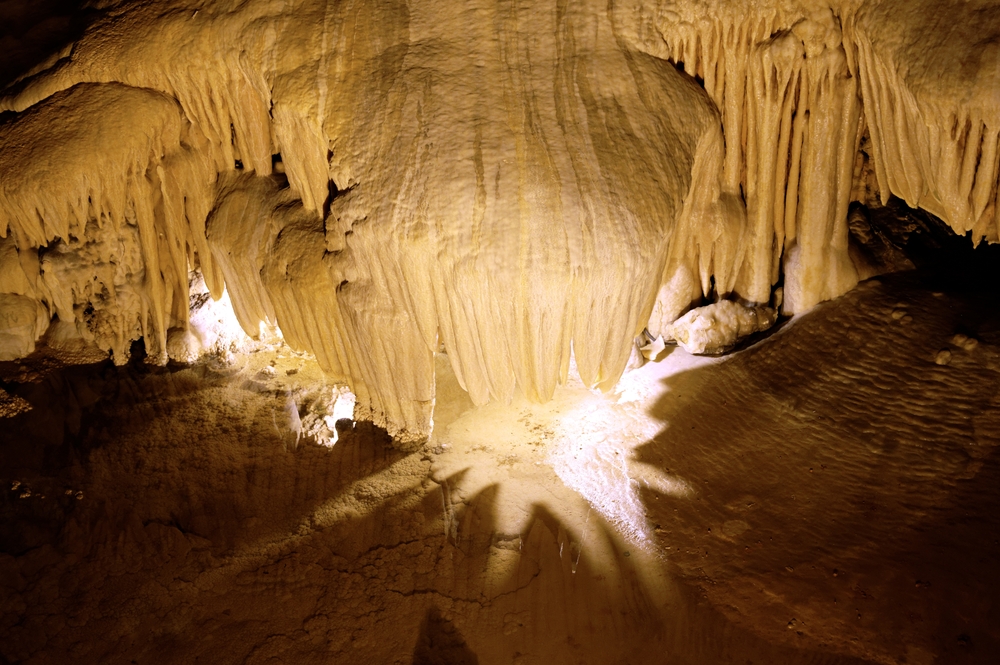
Flowstone occurs when water runs along the ceiling or wall, creating sheets of calcium carbonate deposits that resemble draperies or sheets. Water dripping from the formation may add stalactites and stalagmites along the edges in a kind of fringe.
Unique cave formations are often given individual names, conjuring comparisons in our imagination. One large flowstone formation in Mammoth Cave, in Kentucky in the U.S., is named the Frozen Niagara.
Cave Popcorn
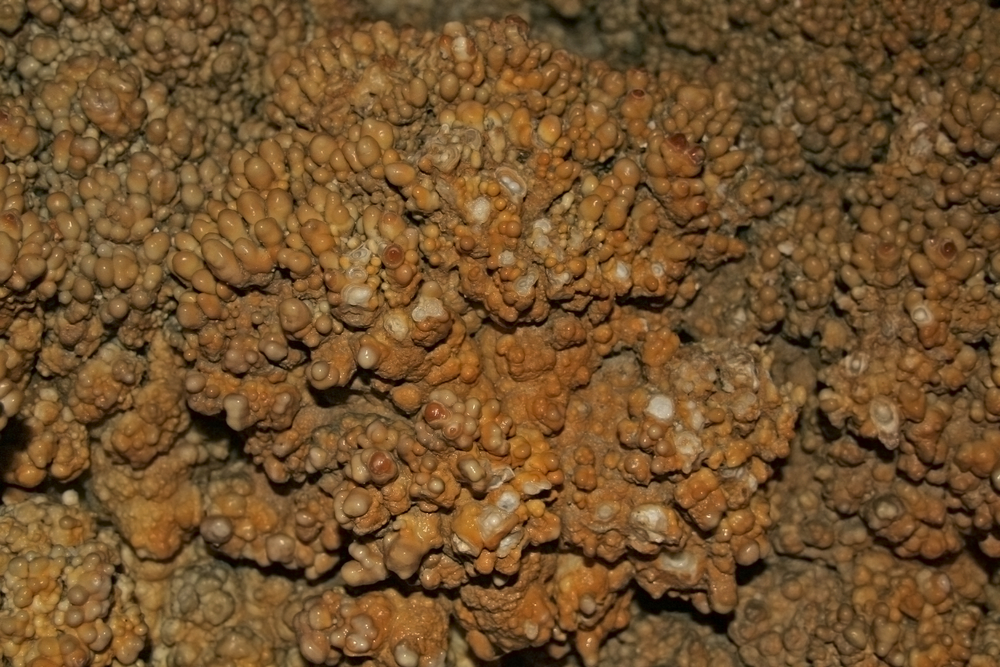
Cave popcorn is formed as water seeps through limestone pores, leaving deposits resembling popcorn, peas, or grapes.
Cave Straws
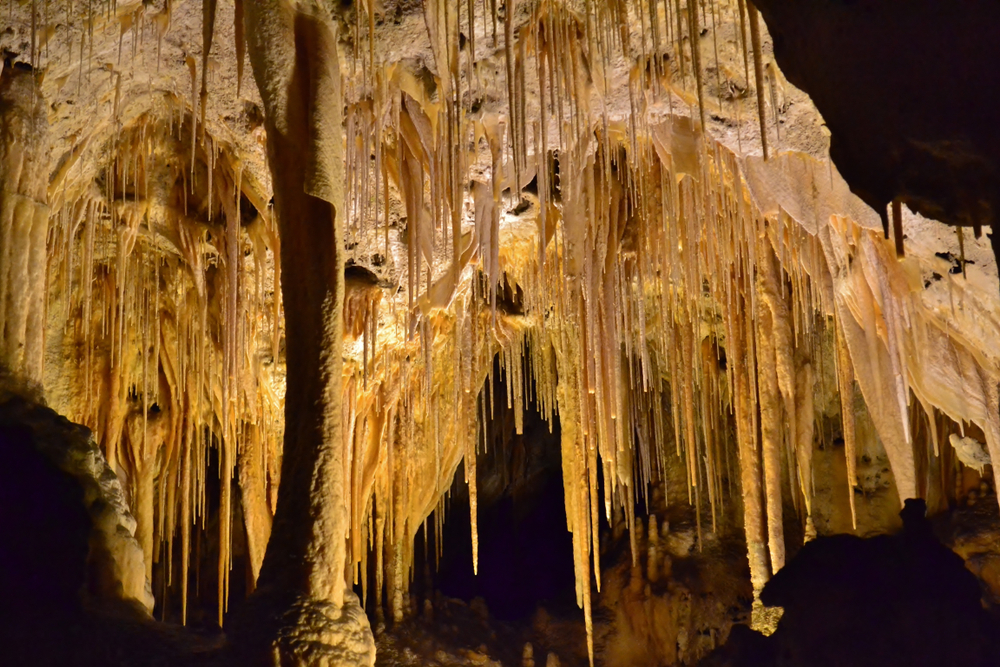
Cave straws, soda straws, or helictites look like their name, delicate stone drinking straws hanging from the ceiling. Deposits accumulate around the edge of hovering water drops, leaving a hollow interior.
These formations take incredible lengths of time to form, sometimes only a few millimeters a year. If the end of the straw becomes blocked, the formation will become a stalactite. A touch can easily crush the delicate straws, so cave authorities take great pains to keep them out of reach of visitors.
Cave Bacon
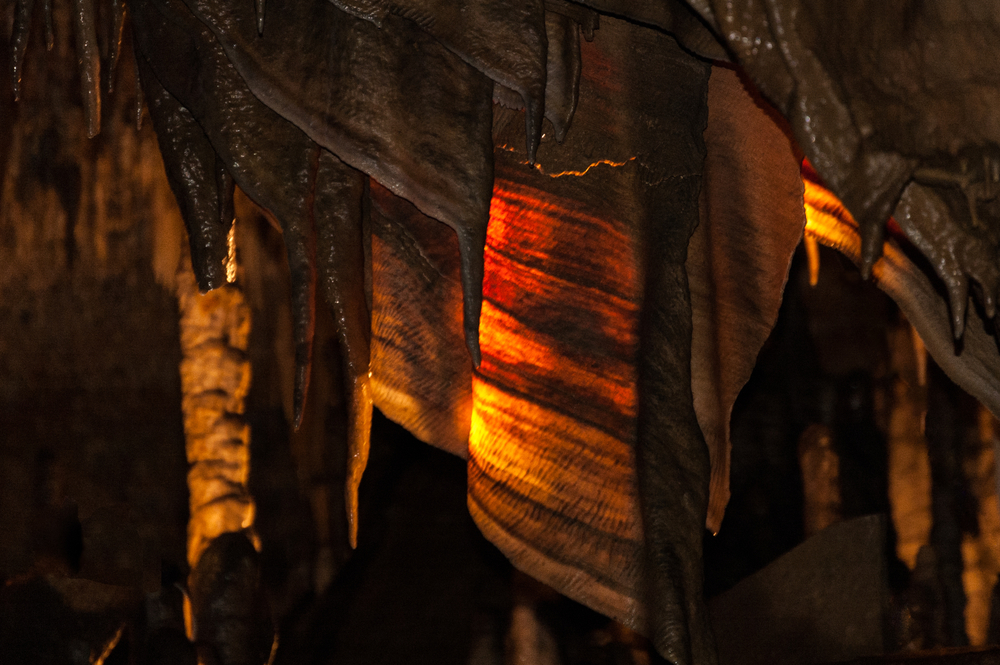
Cave bacon is a type of flowstone. This tasty formation is formed as water runs along a sloping ceiling or outcropping, leaving calcium carbonate deposits along the way. The changing surface causes the water to run in an undulating rather than a straight line, creating bacon-like ripples.
The calcite-rich water sometimes picks up iron oxide or organic material. Then the deposits may vary in color, making it look like that popular breakfast food with yellow, brown, or orange strips.
Cave Flowers
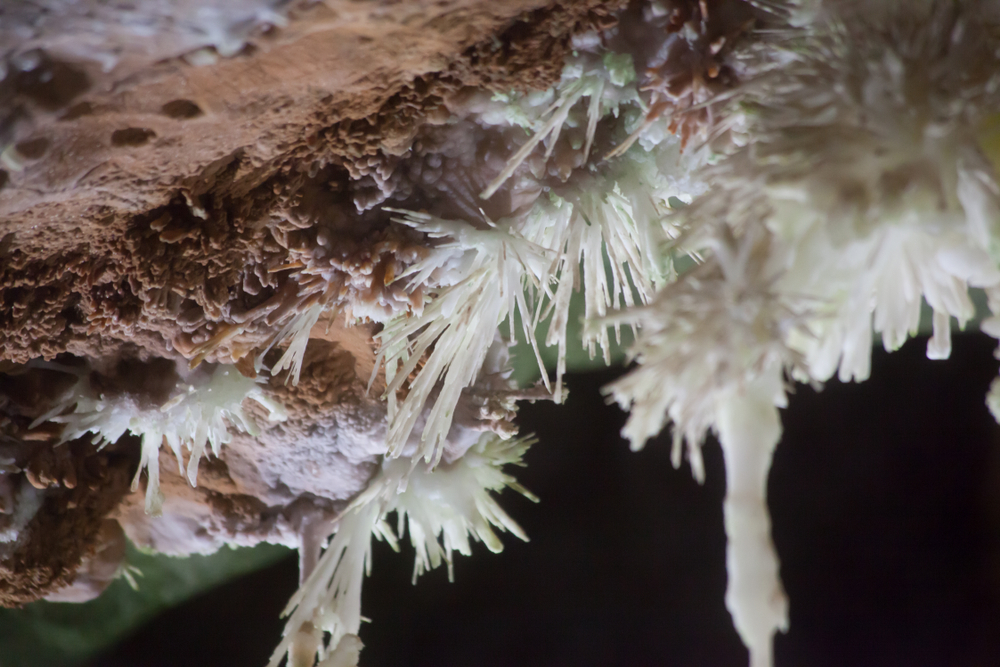
Cave flowers, another profuse formation in Mammoth Cave, Kentucky, are also called “gypsum flowers” or anthodite. I have seen them in Skyline Caverns on the east coast as well.
These delicate formations are composed of long, needle-like crystal clusters radiating from a central base. The needles may appear straight like quills or more feathery like flower petals. Most are made from aragonite or gypsum.
Sulfur is another essential ingredient for some cave flower formations. Its presence gives some of the Mammoth Cave flowers a “sunflower” appearance.
Shelfstone
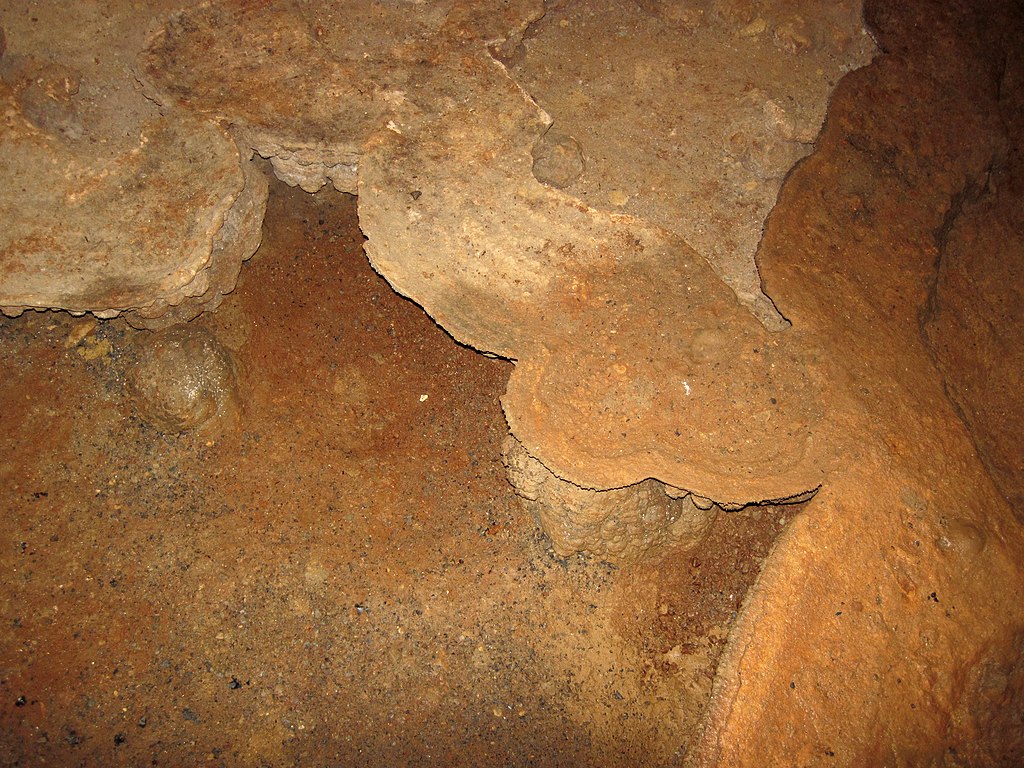
Shelfstone speleothem grows along the edges of cave pools. It radiates into the pools as ledges that are flat on top and sloping beneath the waterline.
Shelfstone is almost exclusively calcite deposited by water dripping in the pool and leaving deposits until they reach and attach to the side of the pool. Shelfstone may look like a table or a lily pad suspended on the pool’s surface.
The deposits will continue to grow in thickness beneath the surface. These odd shelves or tables are indicators of the stability of the pool’s water level. If the level changes frequently, the shelf may be thin and delicate. Shelfstone grows thick where the water level has remained constant for a long time.
Hydromagnesite Balloon (Cave Balloons)
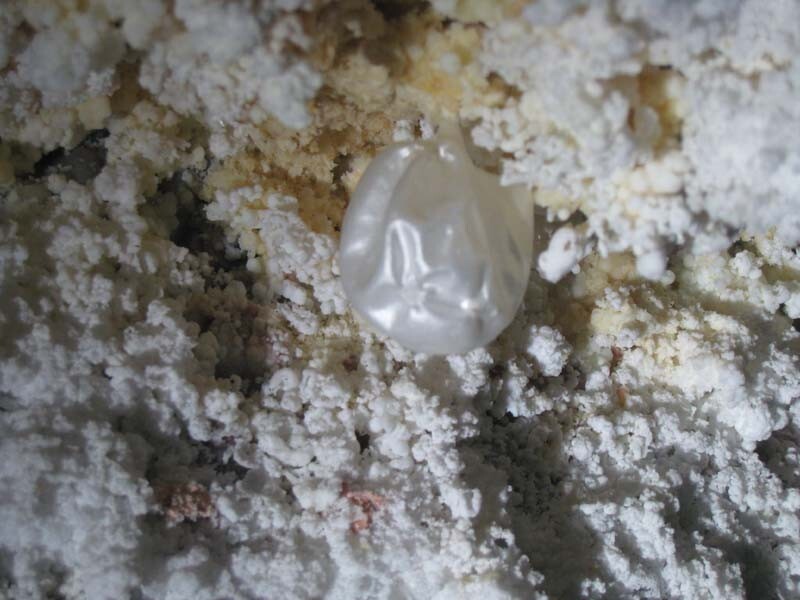
These speleothems are some of the rarest cave formations, found in only a few caves worldwide. One location is Jewel Cave in South Dakota, USA.
Cave balloons are formed as calcite begins to crystallize on cave walls. Magnesium left in the water becomes more concentrated until, after enough evaporation, it precipitates out into hydromagnesite, a pasty white substance that coats the cave walls.
The substance can inflate, though how it happens has yet to be adequately explained. Pearly balloon walls no thicker than .05 mm (a few thousandths of an inch) expand from the white coating to the mystification of tourists and scientists alike.
Boxwork
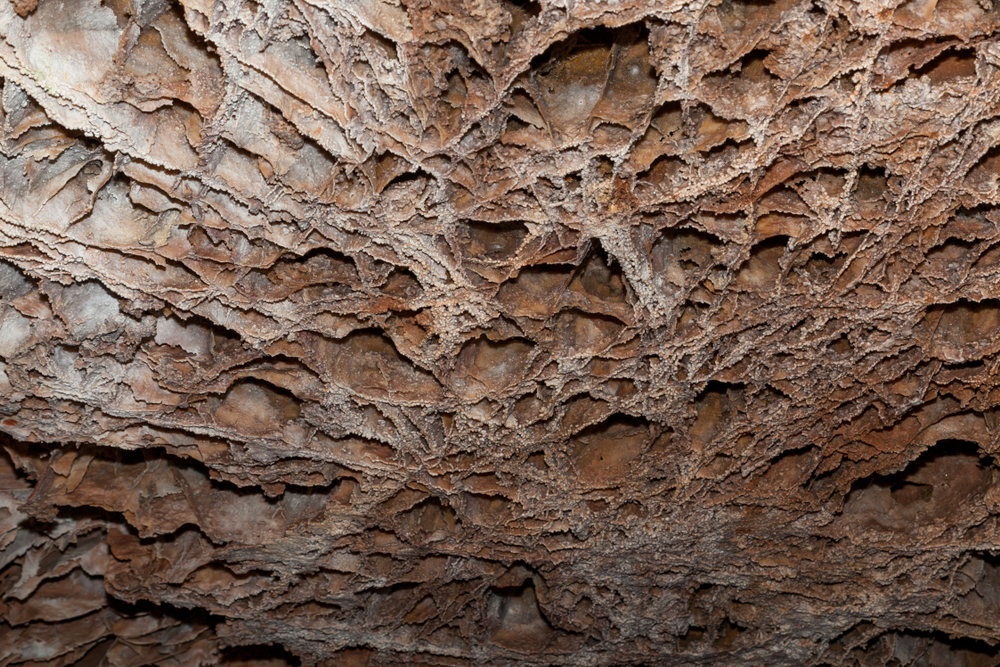
The appearance of boxwork is reminiscent of the corrugated walls of a cardboard box. Unlike many other speleothems, boxwork results from erosion or dissolution of the rock itself rather than by water-carried deposits.
Boxwork comprises a network of paper-thin, intersecting veins of calcite crystals cemented together by a quartz matrix. The cemented calcite-quartz mix fills seams and cracks and is more erosion-resistant than the bedrock around it. It survives natural erosion and dissolving chemicals to become an unusual cave feature.
Boxwork is a rare development found in dry cave environments. The oxidation of metallic sulfide lends color to the formations; dark brown, ocher, or orange. Wind Cave in South Dakota’s Black Hills is one site where the phenomena can be viewed.
Frostwork
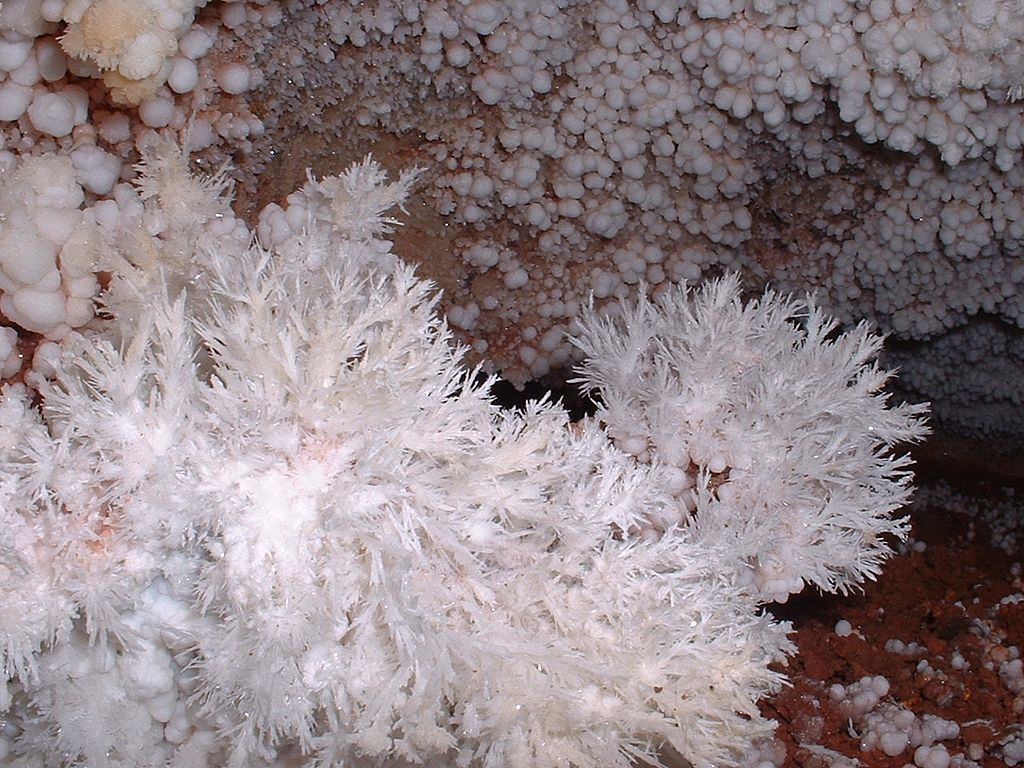
Frostwork is named for its ice-crystal appearance–and sometimes it actually is ice, though most frostwork is composed of aragonite. It can also be composed of gypsum or opal. Frostwork is usually white like ice, but it can also be other colors.
The aragonite crystals may grow into “bushes,” having a unique, needlelike appearance. There are several caves and caverns in the U.S. where frostwork can be found, such as in the Black Hills region of South Dakota–especially Wind Cave National Park and Jewel Cave National Monument–and Timpanogos Cave,
Cave Pearls
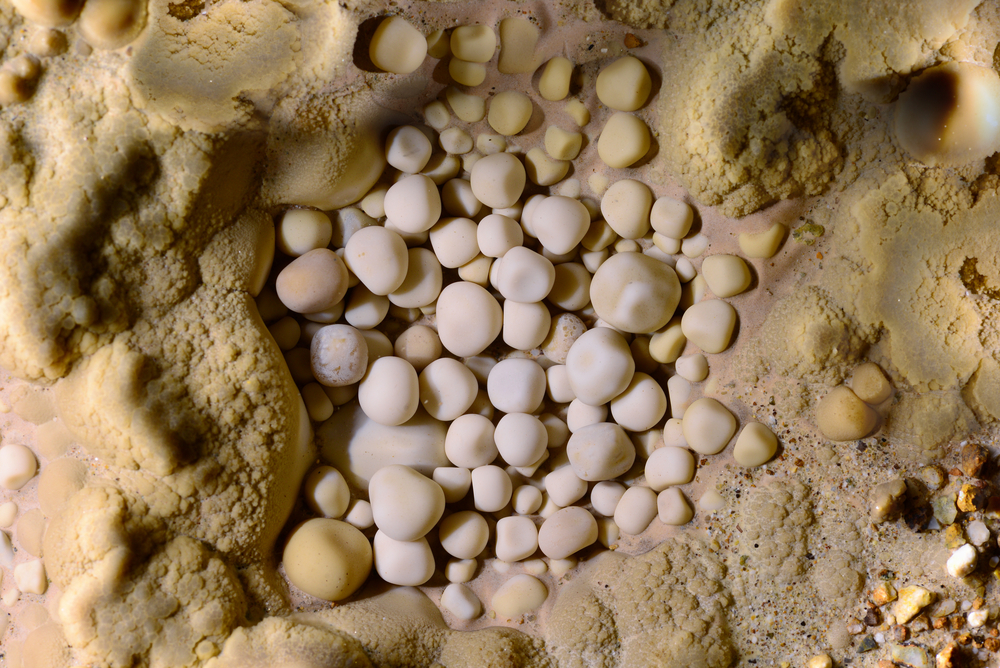
Cave pearls are formed in the same way oyster pearls are, by surrounding a bit of debris with layers and layers of smooth coating–in this case, calcite. Water containing calcite drips into a cave pool and coats particulates resting on the bottom. Over time, cave pearls can grow quite large, usually ending as a sphere shape regardless of the original shape of the debris. However, some can be cylindrical, elliptical, or even cubical.
If a pearl becomes adhered to a surface, a “shell” may begin to form under it. One such development in a cave I visited was named “fried egg” for its size and shape. Most cave pearls are small and may accumulate by the hundreds. Larger pearls have been discovered, up to 8 inches in diameter.
The World’s Most Interesting Caves
There are caves all over the world. With a little research, you can no doubt locate some interesting caves in your area. But many of the most impressive caves, caverns, and cave systems under local governments’ protection because of the fantastic, delicate, and sometimes rare formations that remain “alive” and growing.
Here are the top 10 caves worldwide, as I have found them appearing on the greatest number of lists.
Mammoth Cave, USA
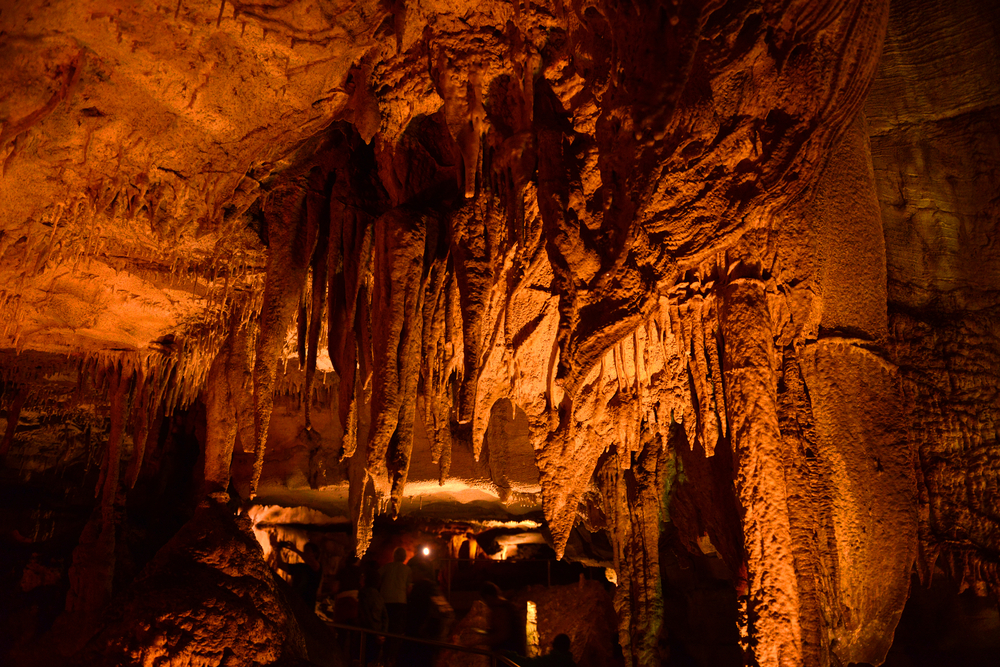
It would be hard to find a list of famous caves that did not include Mammoth Cave in Kentucky, USA. Thought to have once been the course of an underground river, 400 miles of the cave system have been explored to date, with a possible 600 miles remaining.
Ten miles of the cave system are available for tourists to get a taste of this incredible, continually developing phenomenon. Tours are offered for differing abilities, so schedule ahead of time for your best experience.
Stalactites and Stalagmites are among the cave’s most prevalent formations. The ebb and flow of underground pools has caused evaporite dams to form. Helictites (branching, curved, or spiral-shaped formations) and gypsum formations are also common.
Waitomo Caves, New Zealand
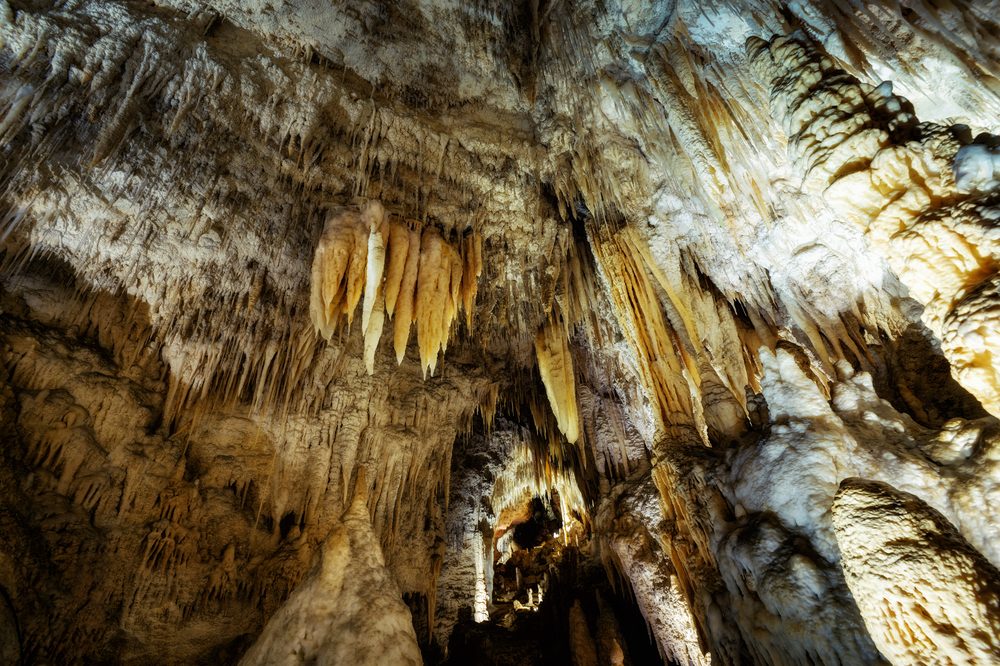
Waitomo Caves in New Zealand feature thick limestone formations formed from layers of fossilized corals, fish skeletons, and other marine animals that were accumulated and compressed while the area was still under the ocean.
The caverns cover three levels with extensive, magnificent stalactite and stalagmite formations and underground water features. But the biggest draw to this site for over a hundred years is the thousands of tiny blue lights created by the adult stage of a rare fungus gnat residing in the caves.
These gnats only live on the North and South Islands of New Zealand and, except for these caves, are rarely seen in their luminescent stage. The unusual sight is in almost all the photo ads for these caves and has brought thousands to take a boat ride into the “glow worm grotto” to witness the eerie specter of these lighted creatures trapped below ground.
Han Sơn Doơng, Vietnam
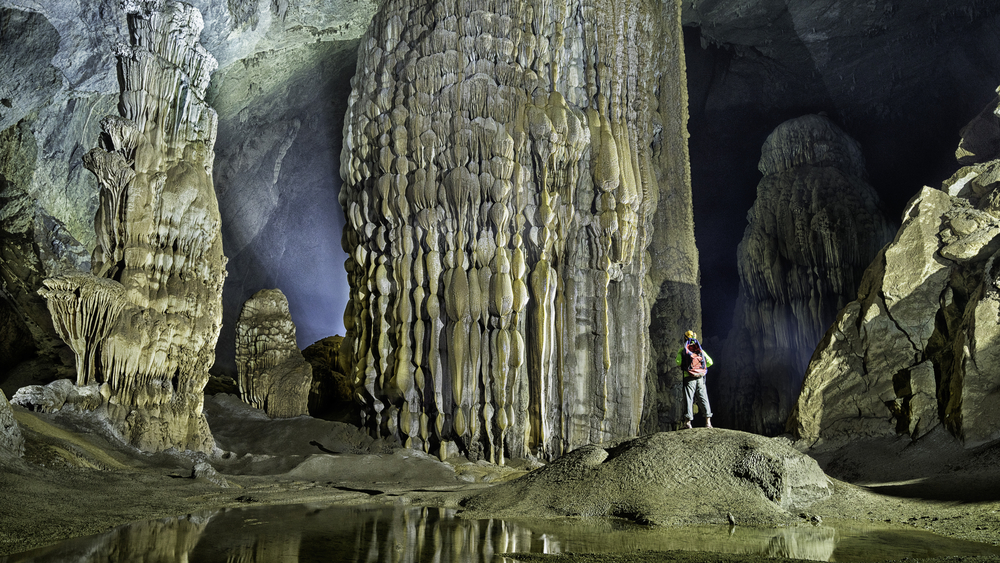
According to the Guinness World
The immense size of the cave has allowed it to develop its own ecosystem. Along with complex giant stalactites, the cave supports its own primeval rain forest, weather patterns, and an underground river yet to be traced to its end. According to many scientists, this cave is truly in a world of its own.
Carlsbad Cavern
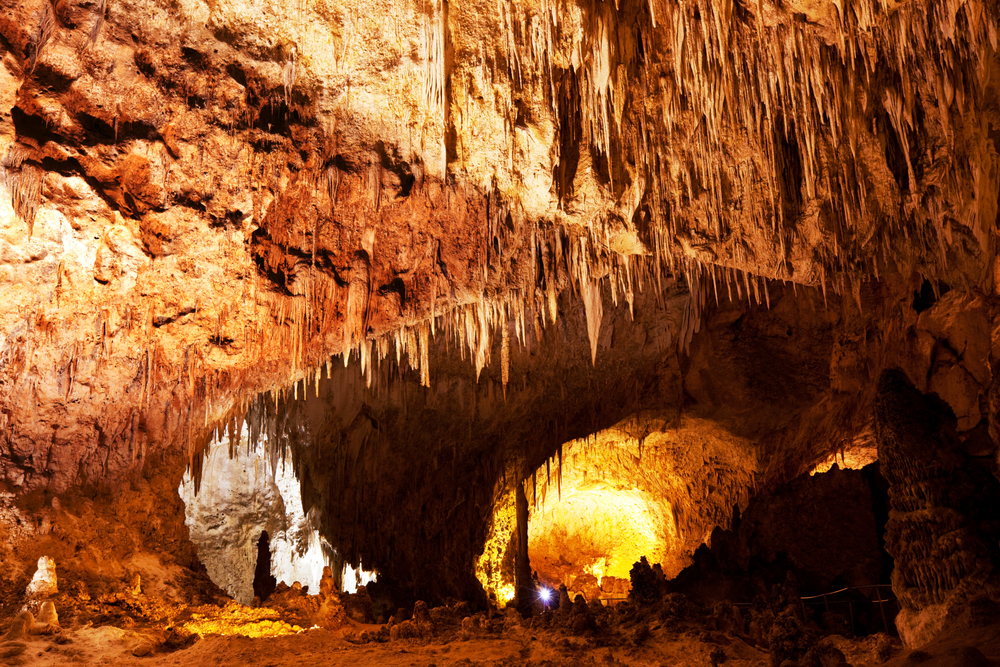
Carlsbad Caverns contains many of the speleothems mentioned above–on steroids. The stalactites and stalagmites are longer and higher, with massive pillars and huge walls of cave popcorn, straws, curtains, pools, and other classic features.
Names such as “King’s Palace” and “Queen’s Chamber” give an idea of the magnificence leading into the many-roomed cavern. And if the initial tour isn’t enough, Join a group for another, deeper-level exploration.
The cave is alive and developing before the visitors’ eyes. Touring the entire 7 miles open to the public takes about 5 hours and is well worth the effort.
Fingal’s Cave, Scotland
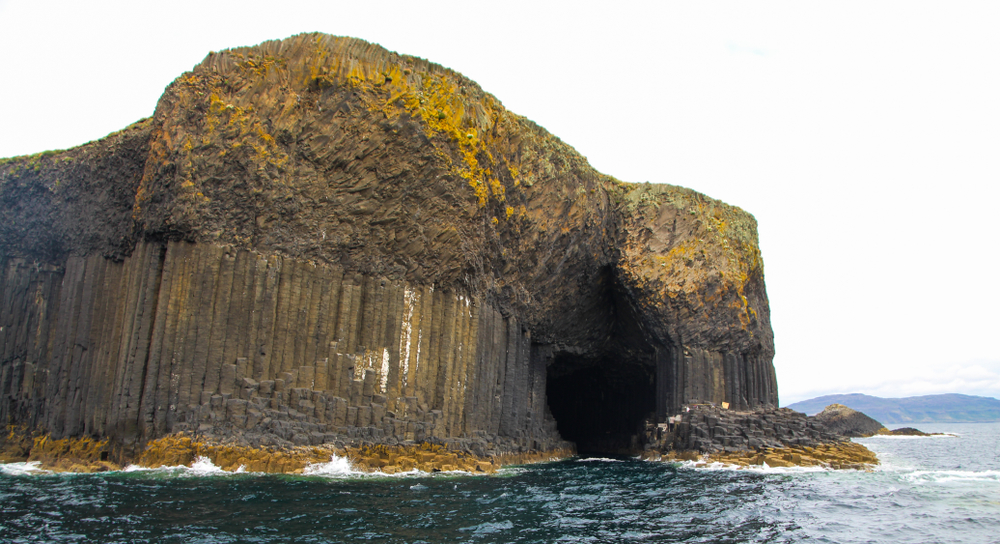
I chose the top ten caves for this article based on the frequency of mention and the uniqueness of each location. But unlike those sites, which will bring tourists many hundreds of feet below the earth’s surface, Fingal’s cave is located at sea level on the uninhabited island of Staffa in the Inner Hebrides of Scotland.
This cave is known for its exceptional acoustics and the unique formation of the rocks that support it. The cave is composed of hexagonally-shaped and jointed basalt columns. The columns formed between two surfaces of an ancient lava flow. The unusual, closely-formed columns comprise the thick walls of the cave.
The cave is part of a nature preserve. Sightseeing cruises pass by from April to September, with a few that land during calm conditions and allow visitors to explore on foot. A row of fractured columns forms a natural walkway just above the high-water line.
The cathedral-height columns and extraordinary sounds generated by the cave have made it the subject of numerous musical scores, plays, and poems. It’s a definite treat for the eyes, ears, and imagination.
Reed Flute Cave, China
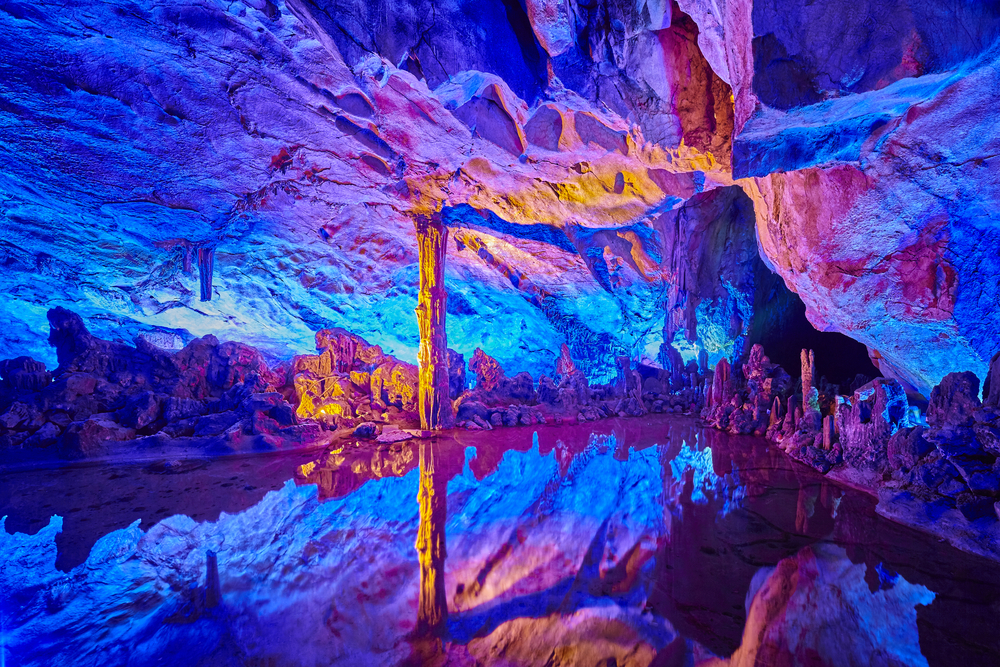
Reed Flute Cave in Guangxi province, China, has been called “the Palace of Natural Arts” by some. The limestone caverns derive their name from a type of reed growing in that area used to make flutes.
The caverns contain outstanding stalactite and stalagmite formations of various forms and colors. The cave has been visited for centuries, as evidenced by over 70 ink inscriptions from as far back as the 700s.
Recognizable shapes of the cave’s formations have been given poetic or descriptive names, from the Statue of Liberty to the Dragon Pagoda.
After being forgotten for nearly a thousand years, Reed Flute Cave was rediscovered in the 1940s and used as a bomb shelter with a capacity for almost 1000 during WW2. The site has since become a major tourist destination.
Škocjan Caves, Slovenia
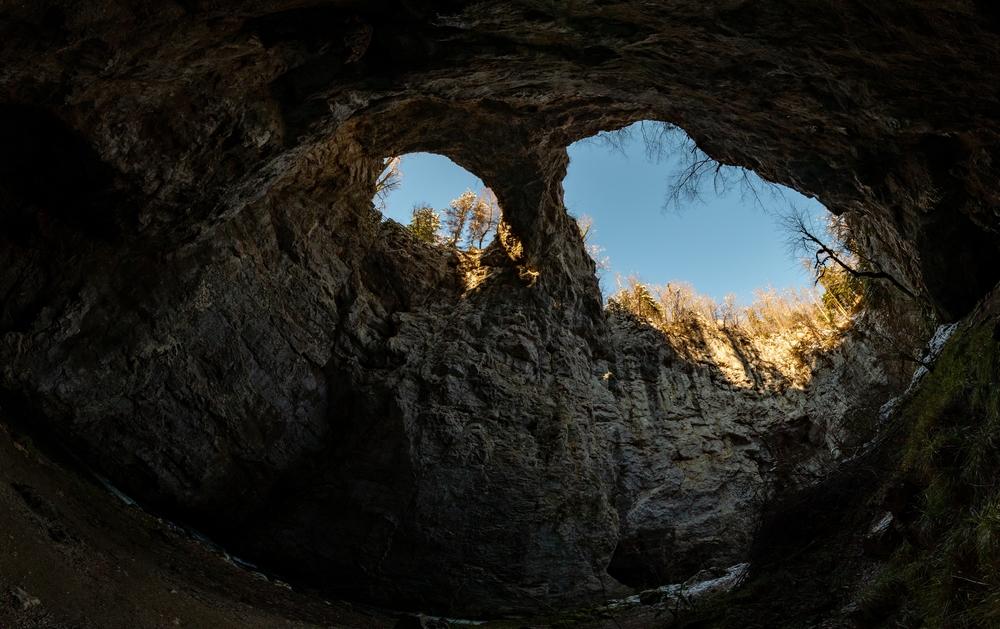
Škocjan Caves have been called the Underground Grand Canyon. An underground river, The Reka, has formed a deep channel here over millennia and still flows at the bottom of the massive underground system.
Although the comparison is understandable, Škocjan Caves comes nowhere near the Grand Canyon’s 18-mile wide span. But visitors can’t help being impressed as they cross the cave’s 200-foot width and 450-foot depth on a narrow, vertigo-inducing bridge.
Some spectacular geological features in the chambers include limestone pools, massive stalagmites, and other unusual limestone formations. A large human gravesite suggests the cave was frequented as long as 5,000 years ago. The caves are marked on the oldest-known maps of the area, and modern exploration has been ongoing since the 1800s.
Marble Cathedral, Chile
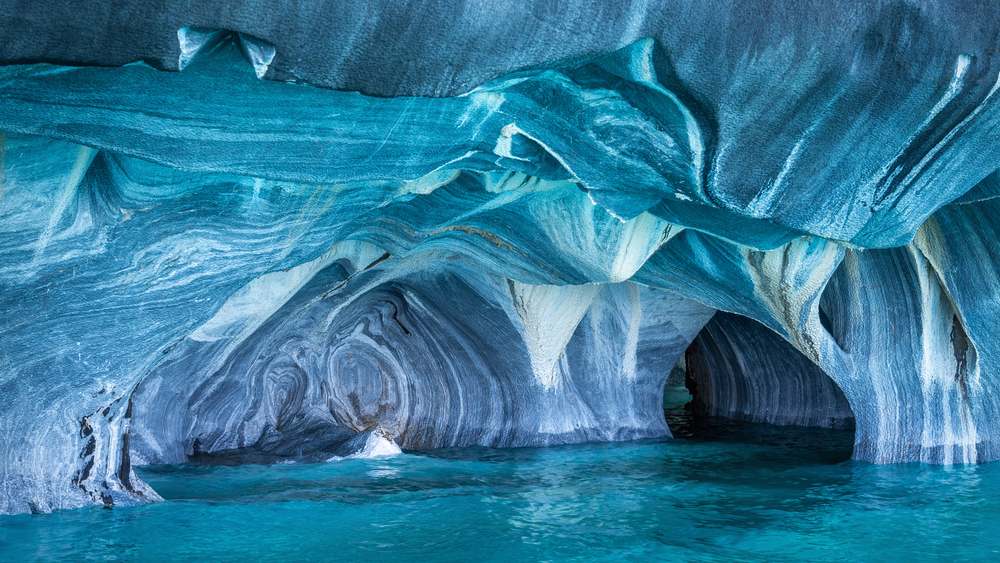
Like Fingal’s Cave, the Marble Caves, or Cathedral, does not require an underground expedition to reach the astounding marble tunnels and formations formed by the action of the waves of General Carrera Lake.
The Patagonian lake that has formed the unique, awe-inspiring formations is shared by Argentina and Chile. It’s named Lake Buenos Aires on the Argentine side, and both names are accepted internationally. But tourists need to seek the Chilean side to visit the Marble Caves.
The caves have been naturally sculpted into a massive marble peninsula by the constant movements of the lake, where the water level is constantly changing, so no two visits are the same.
Glacial rivers from the Patagonian Andes feed the lake. The water levels are lowest in the spring before the glaciers have undergone their spring melt. The water is always frigid, so swimming is dangerous, though fishing is popular in the area.
Visitors take a kayak or boat trip to explore the maze of marble tunnels containing columns and fantastical marble formations. The diffused light reflects vivid shades of blue onto the marble, along with some white and pink coloring. There’s certainly nothing like it anywhere else in the world.
Puerto Princesa Subterranean River, Philippines
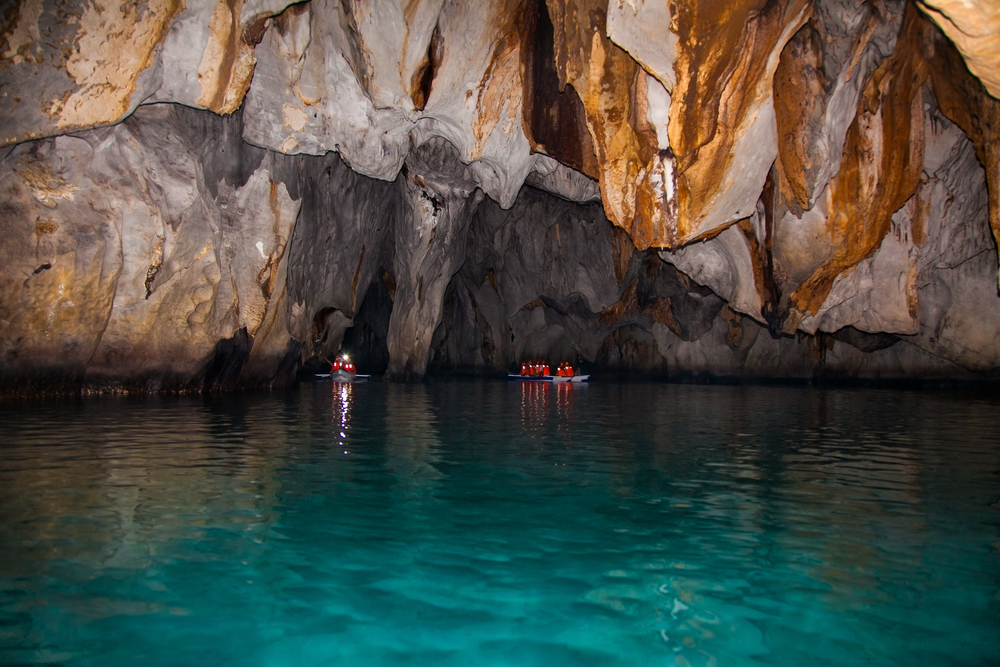
The Puerto Princesa Subterranean River National Park is located in the Philippine’s Saint Paul Mountain Range on the west coast of the island of Palawan. Within the park, the St. Pauls Underground River Cave, more than 15 miles long, contains a 5-mile underground section of the Cabayugan River. After winding through the cave, the river flows directly into the West Philippine Sea.
The karst cave contains major stalactite and stalagmite formations and huge chambers. Karst is a limestone-based landscape eroded by slightly acidic water, producing towers, ridges, sinkholes, fissures, and other common cave formations.
In 2010 a second floor was discovered, revealing small waterfalls and a dome measuring 980 ft. above the underground river. There’s also a deep water hole in the river, smaller river channels, sea creatures, and a large colony of bats.
The cavern contains one of the largest cave rooms in the world, the Italian’s Chamber, which is over 2.5 million square meters in volume. It’s difficult to explore the deepest areas of the underground river because of a lack of oxygen.
The Puerto Princesa was considered the world’s longest underground river until a longer one was discovered in the Yucatán Peninsula in 2007. Still, the magnificent site has been considered for the position of one of the new seven wonders of the world.
The Cave of the Crystals, Mexico
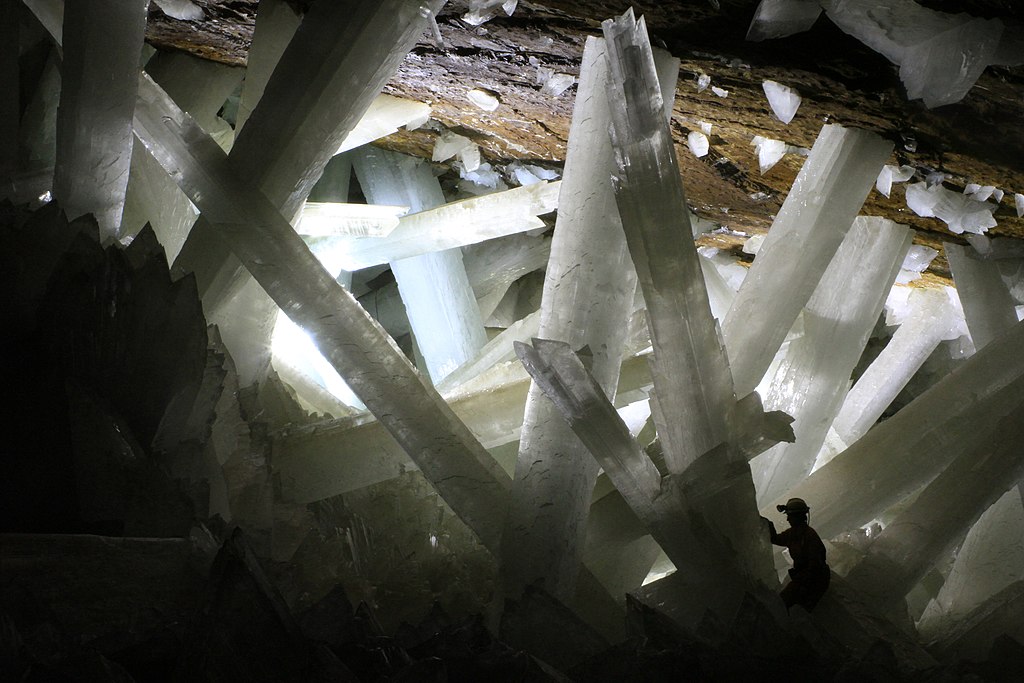
A top-ten list of caves would not be complete without including Mexico’s incredible Cave of the Crystals. The almost unbearable heat and humidity generated by nearby volcanic activities make this phenomenal site closed to all but specially equipped scientists.
The Cave of the Crystals consists of three chambers containing stacks of selenite crystals so large a human appears miniscule beside them. The tallest crystals measure 36 feet high and weight around 55 tons.
Although human activity had been close by for centuries, the spectacular formations were only discovered in 2000 by two employees of the Naica Mine who were following traces of silver about 980 feet underground. An iron door was erected with just a few days to protect the area and anyone who might wonder into it.
The incredible formations can be viewed in photos and by viewing any of several documentaries about the find and more ongoing discoveries at the site.
Ice Caves
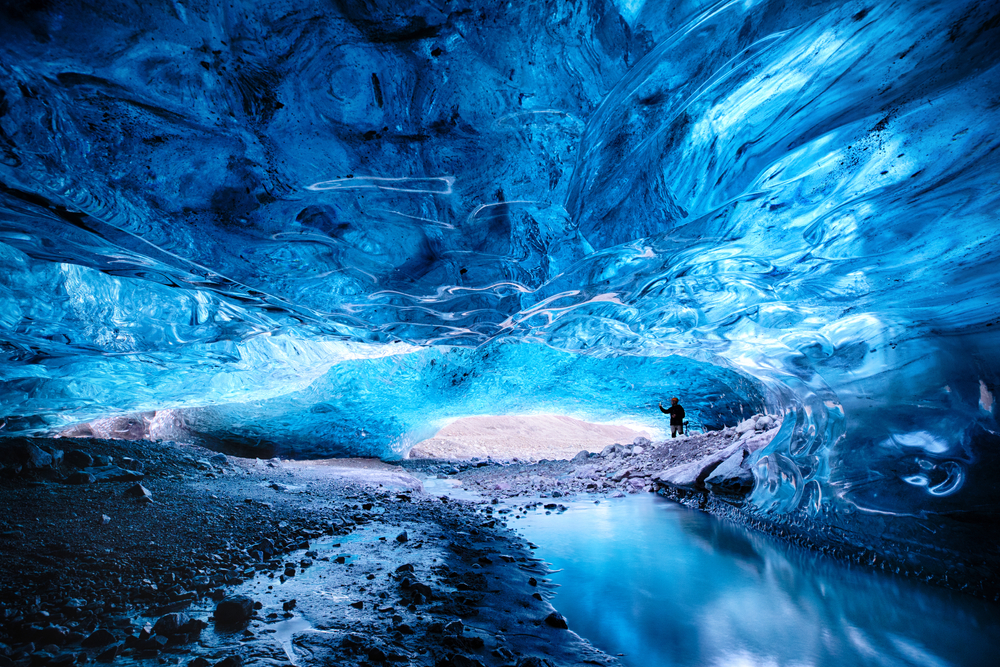
Though I didn’t include any ice caves on the list, there are many such caves in Iceland alone, and many others in locations such as Alaska, Switzerland, Austria, Slovakia, and even glacier caves in Canada.
Ice creates it’s own splender with unique shapes and colors. For those who enjoy the cold, exploring one of these unique locations would be a treat.
There are also some seasonal ice caves, such as those created each winter along the coast of Lake Superior, USA, in the Apostle Islands National Park. The Lake freezes, enabling visitors to walk out and explore the inside of massive caves along the lakes’ cliff shore. The caves become a fantasy land of glittering crystals during winter months, then it all melts away in spring.
Ice can sometimes be unstable, so check the site before visiting, as there is sometimes a chance at least a portion of the site has collapsed.

